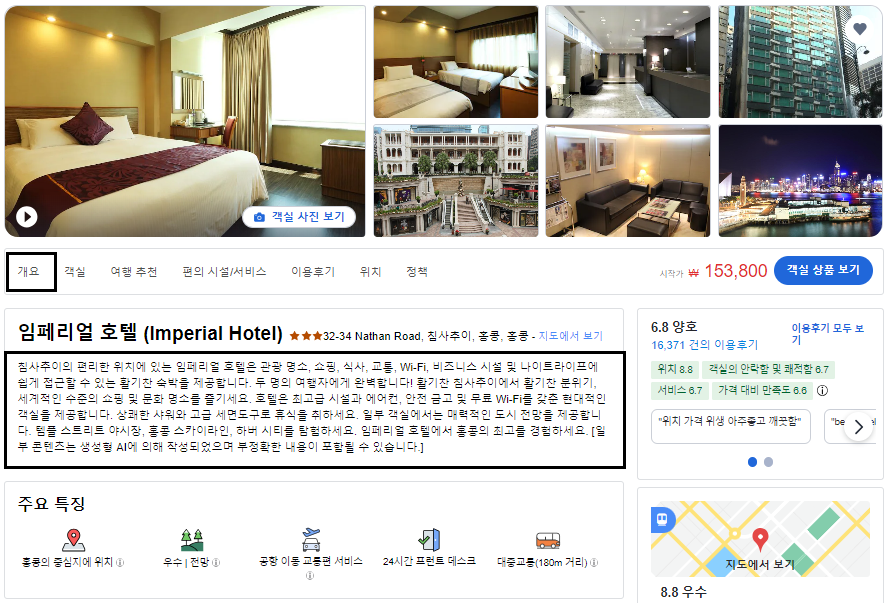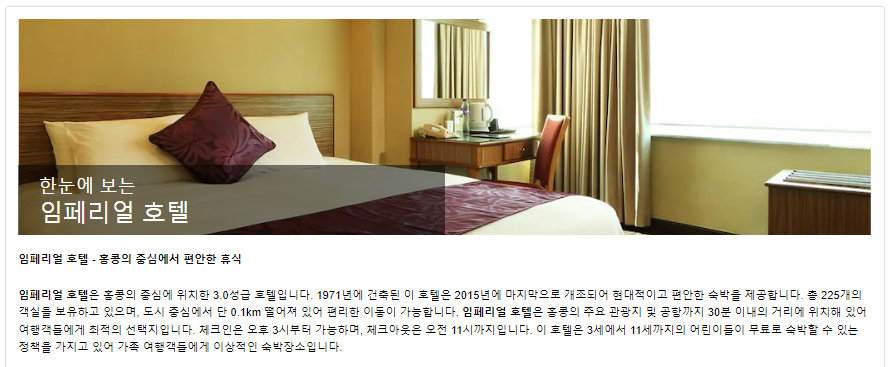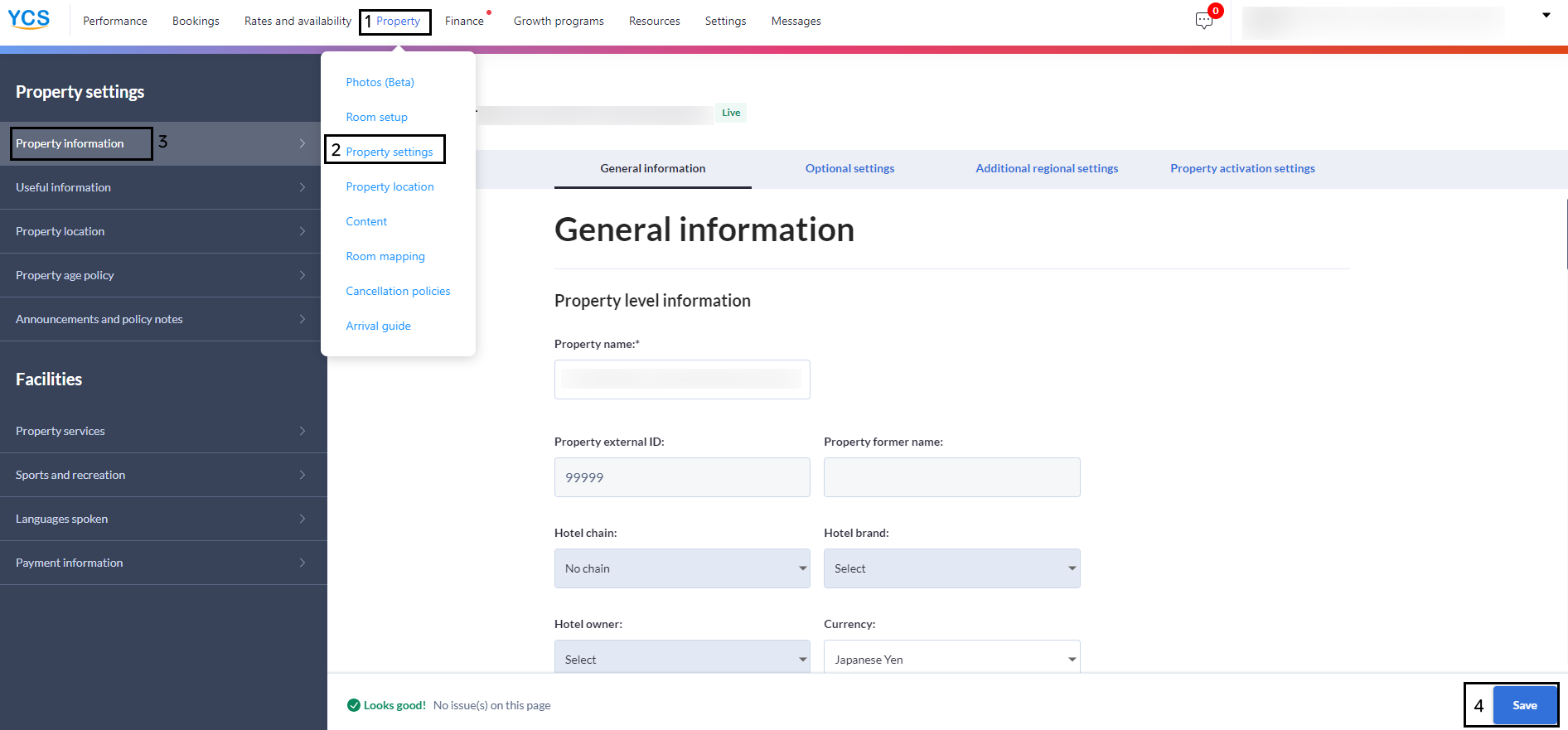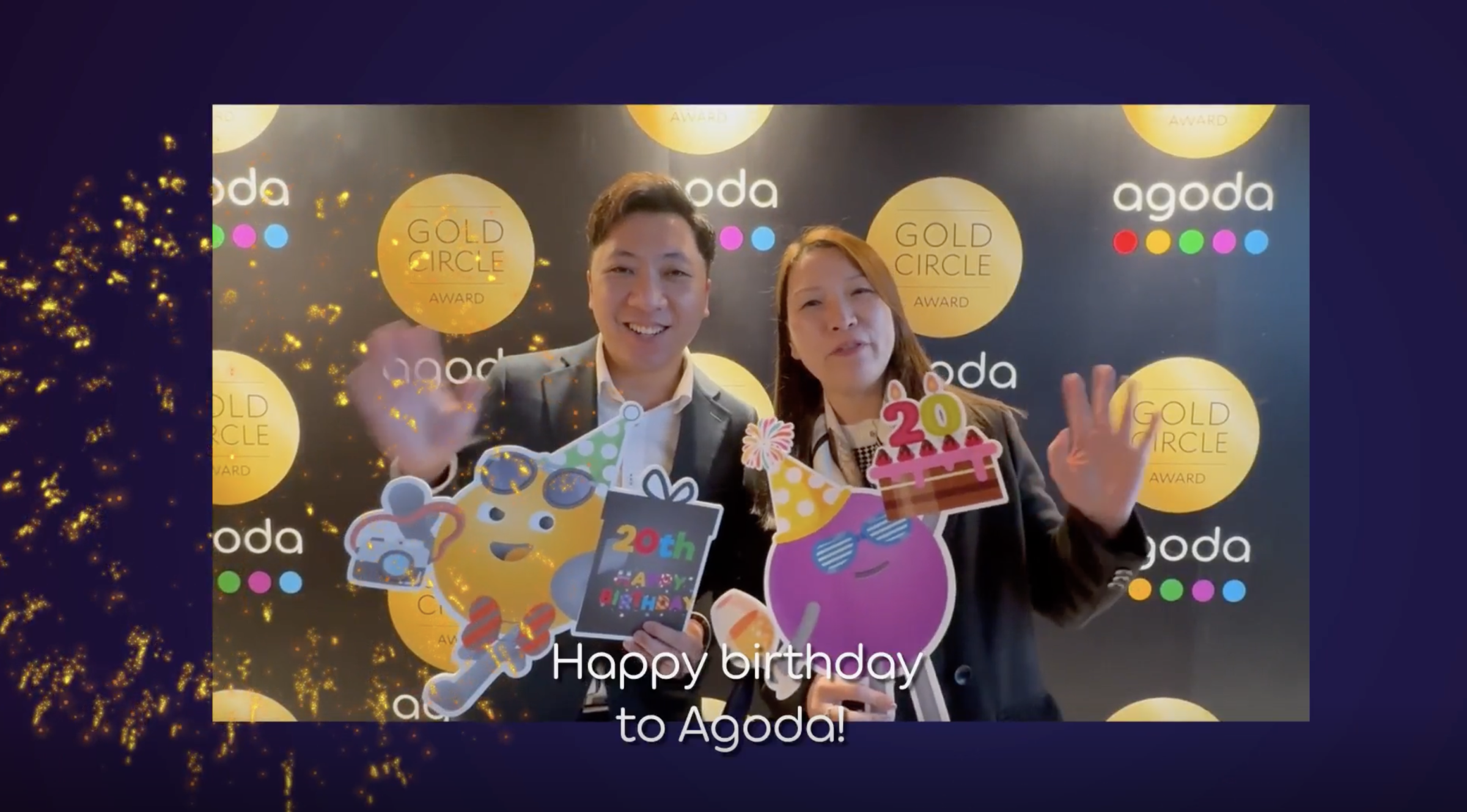This guide covers description types, the creation process, and keeping your property details up-to-date.
What is a property description?
A property description highlights the key information and selling points of your property, giving travelers a brief understanding of its location, room types, facilities, and other features. This description will be automatically generated for your property page after you adjust your property settings on YCS.
Note: Your property descriptions may differ depending on the language in which the property page is being viewed.
Short Description
The short description summarizes key highlights and essential information about your property. On the frontend, it is displayed below your property name in the Overview section of the property page, as shown below.

Dynamic Description
A dynamic description is automatically generated based on your YCS settings, such as facilities, landmarks, rating scores, property name, and type. The description updates in all languages and will auto-sync within 7-14 days if settings are changed on YCS.
On the front-end, this description appears in the More about section.

How do I change my property description?
Property descriptions are automatically generated by an algorithm using the provided data for your property. If you need to change any information in your property description(s), please ensure your property details are updated on YCS. The property descriptions will then be regenerated accordingly. Short descriptions include limited information from the property settings, while dynamic descriptions will include more details from the information provided.
- Go to YCS >> Property >> Property settings
- Select the category of the setting on the left-hand side, such as: Property location, Property age policy, Property services, Sports and recreation, etc.

- Save your changes. The property description will then be regenerated automatically.
- Please note that it will take around 14 days for your property page to reflect these changes.
Your property descriptions may differ depending on the language in which the property page is viewed.
How does Agoda generate property descriptions?
Agoda follows specific guidelines to create property descriptions:
- Descriptions must not exceed 160 words.
- Content must be unique and not duplicated from other websites.
- Descriptions should be in paragraph format, not bullet points or links.
- Use third-person perspective; avoid “we,” “us,” “I,” or “our.”
- Include the property’s location, facilities, unique features, and selling points.
- Avoid directions, public notes, policies, or excessive details about facilities and offerings.
- Keep content clear and concise, avoiding flowery language and excessive adjectives.
- Do not mention competitors or other hotels.
- The Content Team aims to include all necessary and useful information for guests, adhering to guidelines. The final descriptions are considered definitive.
What are the different components of property descriptions and their purposes?
Each paragraph should include a category summary. Many users only read the first sentence, so it should contain the most important information. The description should end with a context summary that helps a traveler visualize that property as an integral part of the vacation or business travel he or she is booking.
Category summary
Most travelers think about their accommodation in broad, standardized categories, and it’s therefore important to immediately inform the user of what kind of category the property fits in.
- Traveler purpose: Transit hotel, business and convention hotel, road motel, beach resort, etc. These categories allow user to immediately identify or un-identify with the property.
- Property infrastructure or building type: Large resort or small BnB, modern or historic, high-rise or hidden alley, the building itself tells a big part of the story.
- Location: Near the airport, in the gothic quarter, atop a mountain, next to the golf course, these aspects help the user evaluate the property in relation to their anticipated itinerary.
- Price: Supremely indulgent, luxury, mid-price, high-value, budget – sure, the user can see the actual prices on the page, but they also want to compare those prices to their own preconceived notions of what they should be getting for those prices.
Example: Large business hotel in a high-rise office complex
“The Continent Bangkok is a modern business hotel located in Bangkok’s CBD is closely situated to the capital’s embassies, premium offices, and high-end retail centers, providing a convenient base for efficient access to the city’s business and leisure activities.”
Context summary
Every property description should end with a strong selling summary that promotes the property as the ideal setting for the kind of traveler to its features, location, and price will attract.
Example: Large business hotel in a high-rise office complex
“For serious business or just a high-class holiday in the center of this vibrant city, the Continent offers the best in five-star amenities and an unparalleled location that will save you time and effort on every day of your stay.”
자주 묻는 질문 (FAQ)
먼저 YCS에서 숙소 설정을 확인해 주세요. 변경 사항은 14일 이내에 자동으로 반영됩니다. 14일 후에도 부정확한 정보가 기재되어 있다면 당사로 연락 주시기 바랍니다.
안타깝지만 숙소 소개는 수동으로 변경할 수 없으며 텍스트를 입력할 수 있는 칸도 없습니다. 아고다는 가이드라인 준수 여부, 길이, 콘텐츠 품질을 바탕으로 모든 숙소 소개를 검토한다는 점 유의하시기 바랍니다. 하지만 YCS에서 제공한 정보와 일치하지 않는 오래된 또는 부정확한 정보가 표시되는 경우, 당사로 연락 주시기 바랍니다.
Changes synch automatically within 14 days. If the changes aren’t reflected after 14 days, please contact us for assistance.
Contact us
Still looking for a solution? Go to YCS and click on the ![]() Need Help button in the bottom right corner of the page, or contact us through other methods.
Need Help button in the bottom right corner of the page, or contact us through other methods.
본 게시글이 도움이 되셨나요?
%
%
소중한 의견에 감사드립니다.









